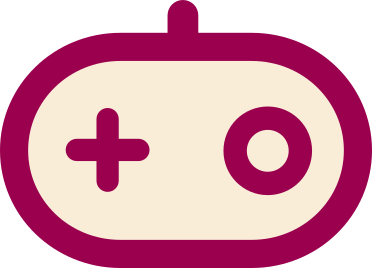No edit summary |
(Replaced content with "{{Delete}} Category:Consoles") |
||
| Line 1: | Line 1: | ||
| + | {{Delete}} |
||
| − | The '''Nintendo Entertainment System''' (NES) is an 8-bit, 3rd generation console released in 1983 in Japan, where it was known as the '''Famicom'''. |
||
| − | |||
| − | The Famicom Disk System (FDS) is a Japan-only add-on which played special versions of games. It featured an extra FM sound channel, which allowed for richer sounds and music than is possible on the regular console. |
||
| − | |||
| − | Emulation for the NES is robust, with several high quality emulators for various systems. |
||
| − | |||
| − | |||
| − | |||
| − | |||
| − | <nowiki>*AoEX is based on NesterJ 1.12 Plus 0.61 RM, so it includes features like rewind mode, cheat codes support, rotated/mirrored screen, sepia palette, support to rare mappers (the pirate bootleg FF7 works on it), etc, but its compatibility is inferior to 1.13 beta 2.</nowiki> |
||
| − | |||
| − | ===Comparisons=== |
||
| − | |||
| − | * PuNES is the most accurate NES emulator according to tests.<ref name="nestas">http://tasvideos.org/EmulatorResources/NESAccuracyTests.html</ref> These test ROMs used for determining accuracy in tests, unfortunately, don't test everything that matters for accurate emulation (and in some cases, test stuff that doesn't matter for emulating any games). So just because an emulator has high ratings doesn't mean it is free of issues. |
||
| − | * However, according to the same tests, [[Mesen]] is actually slightly ahead of puNES, with a score of 98.1%<ref>http://www.mesen.ca/TestResults.php</ref> |
||
| − | * Nestopia has a high ranking in those same tests.<ref name="nestas" /> |
||
| − | * FCEUX scores fairly low in the same tests, despite being a recommended emulator on TASVideos. The New PPU is more accurate than the Old PPU, however. Version 2.2.2 is promised to have brought improvements from Bizhawk, a more accurate emulator, but it is unknown how much is fixed. |
||
| − | |||
| − | ==Emulation Issues== |
||
| − | ===Overscan=== |
||
| − | Several NES games need the overscan to be cropped to look proper. There is, however, seemingly no standard level of overcropping. Many games seem to require different levels of overcropping. SMB3 requires a lot of cropping, however the same level of cropping will obscure of the letters in the status bar in Castlevania games. It did not seem that there was standardization until the next generation of consoles. |
||
| − | |||
| − | NES emulators are similarly afflicted by this issue, as they each have their own algorithms for generating the NES color palette, meaning they all have slightly to wildly varying palettes. As such, there isn't really a "true" NES color palette, and which emulator has the "best" palette often comes down to preference, or whichever looks closest to how the real console looks on a user's own particular TV. Emulators such as Nestopia have the ability for the user to edit the color palette to their liking. |
||
| − | |||
| − | Some arcade machines based on the NES hardware, such as the PlayChoice-10 and the Versus series of cabinets, did generate a native RGB signal, however. The colors on these cabinets tend to be very vibrant and saturated, giving games a very distinct look compared to how they would look on the real console. Nestopia gives the user the choice to use the RGB palette featured in these cabinets, though it is not usually considered to be the definitive or "real" NES palette. |
||
| − | |||
| − | ==References== |
||
[[Category:Consoles]] |
[[Category:Consoles]] |
||
Revision as of 01:12, 28 January 2020
This page is a candidate for deletion.
If you disagree with its deletion, please explain why at Category talk:Candidates for deletion or improve the page and remove the
{{delete}} tag.Remember to check what links here and the page history before deleting.
